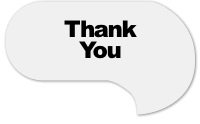All the technology running through our lives today can sometimes make it feel like we’re always connected and yet rarely “personal.” A quick note of thanks breaks through the chatter—especially when it’s a handsome, handwritten card. I tend to write out a card whenever someone surprises me with a gift or when I’ve had a distinctly good conversation with someone. This has been particularly helpful in the age of conference calls and video chat introductions.
It never fails to impress the right people or help me connect with someone on a deeper level—both personally and professionally. Whether it’s old friends, new acquaintances or prospective business partners, nothing makes you look more thoughtful or put-together than a handwritten note. Personalized stationery makes the gesture even more gentlemanly. Yes, it takes a little effort. But it’s never a mistake to send one. Of course, you don’t always have to send paper. There are times when an email or a quick text will suffice. To get a little more clarity, we consulted an expert. Here’s when and what to send and why.
An Actual Notecard
A quick note of gratitude doesn’t have to be long or overly eloquent. Just try to come up with three or four simple sentences. Type it out on your computer or your phone’s notes app first so you can finesse and edit before actually putting it down in ink. Adding a date isn’t necessary, but can be nice for posterity sake. If it’s printed with your name, crossing out your last name is an old school touch—it signifies you’re close and on a first-name basis with the recipient. Of course, remember to sign it: either your first name or just an initial.
An Email or Text
While a paper note will never not be appreciated, etiquette expert Maralee McKee says that there are circumstances, especially these days, where an email or text is sufficient. If you don’t have the person’s physical address or when an email or text message is the next form of contact that you’ll be having with the other person. This happens most often in work situations with colleagues, she says. For example: when you email promised documents just hours after having lunch with coworkers, or clients, you’ll want to thank them for lunch. Or if you’ve just been on a job interview: Immediate follow-up is essential, says McKee. You’ll want to express your gratitude (and reiterate any ideas you discussed about the job), and you’ll likely want to do it fast.
When a Verbal Thanks Is Sufficient

According to McKee, there are times when a simple “thanks” said in the moment or on the phone is plenty. For example: holiday gifts opened in front of the giver, small gifts given as gestures of gratitude (hosting, wedding attendants, etc.) or small acts of kindness, like when another parent gives your kid a ride.

